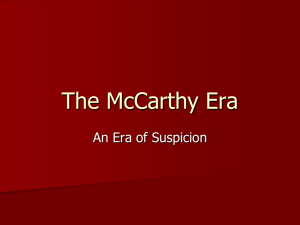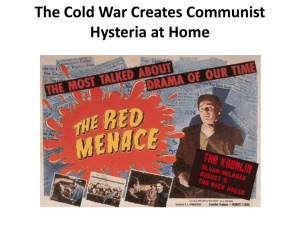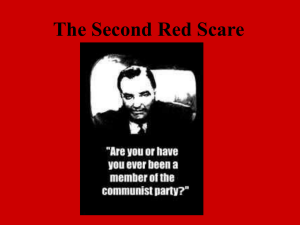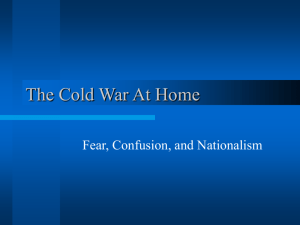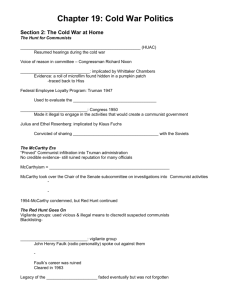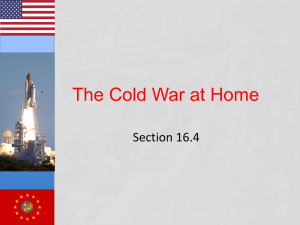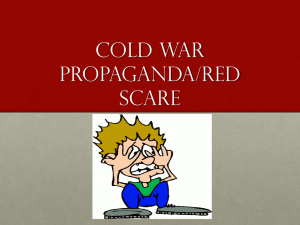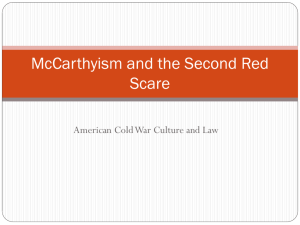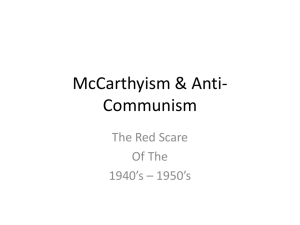The Red Scare
advertisement
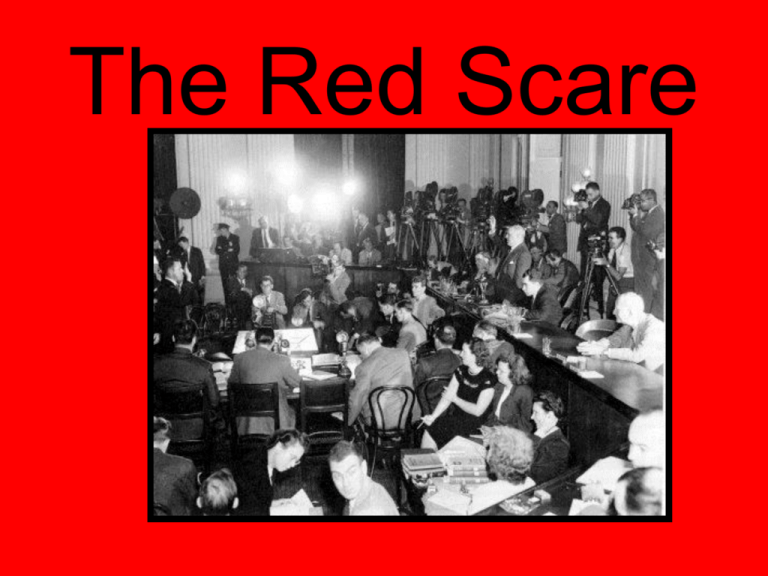
The Red Scare In 1947, the Truman Administration, under pressure from Republican critics, set up a Loyalty Review Board to investigate the background of more than 3 million federal employees. Thousands of officials and civil service employees either resigned or lost their job in a probe that went on from 1947 1951. In addition, the Supreme Court in 1951 upheld the constitutionally of the Smith Act of 1940, which made it illegal to advocate or teach the overthrow of the government by force or to belong to an organization with this objective. (Dennis et al v. US) Over Truman’s veto, Congress passed the McCarran Internal Security Act which: 1.Made unlawful to advocate the establishment of a totalitarian government 2. restricted the employment and travel of those joining Communist organizations 3.Authorized detention camps for subversives In the House, the Un-American Activities Committee (HUAC), originally established in 1939 to seek out Nazis, was reactivated in the postwar years to find Communists. The Committee looked for communist influence in such organizations as the Boy Scouts and in Hollywood. Actors, directors and writers were called to testify; those who refused were tried for contempt of Congress, and/or blacklisted from the industry. Whittaker Chambers, a confessed Communist, became a star witness for HUAC in 1948. His testimony, along with the investigative work of Congressman Richard Nixon, led to the trial of Alger Hiss, a prominent official in the State Department who had been with FDR at the Yalta Conference and accused of passing secrets to the Soviets. Hiss denied the allegations, but was sentenced to prison for a perjury conviction. When the Soviets tested their first atomic bomb in 1949, many Americans were convinced that spies had helped them to steal the technology from the US. Klaus Fuchs, a British scientist who worked on the Manhattan Project, admitted giving A-bomb secrets to the Soviets. An FBI investigation traced another spy ring to Julius and Ethel Rosenberg. The couple was found guilty of treason and executed for the crime in 1953. Critics cited anticommunist hysteria as playing a role in the conviction. Joseph McCarthy, a Republican senator from Wisconsin, used the fear of communism in his reelection campaign. In a speech given in 1950, he charged that 205 Communists were still working for the State Department. With widespread media coverage, McCarthy used the wave of fear to make himself one of the most powerful men in America. McCarthy used a steady stream of unsupported accusations about Communists in government to discredit Truman’s administration. Even President Eisenhower would not defend accusations against General George Marshall against McCarthy’s untruths. Finally, in 1954, McCarthy's reckless cruelty was exposed on TV. A Senate committee held televised hearings on Communist infiltration in the Army, and McCarthy was seen as a bully by millions of viewers. In December, Republicans joined Democrats in a Senate censure of McCarthy. The “witch hunt” for Communists, or McCarthyism, had played itself out.
